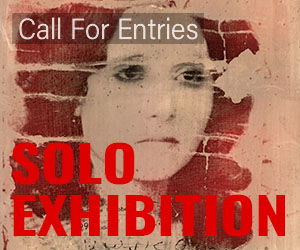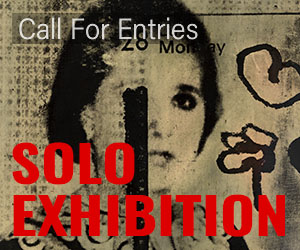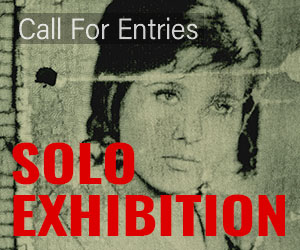
Country: Australia
Birth: 1976
Birth: 1976
Tamara Dean (b. 1976, Sydney, Australia) is a photographic artist whose works explore the informal rites of passage and rituals of young people within the natural world.
Her solo shows include Ritualism, Divine Rites, This too Shall Pass and Only Human.
Dean has received numerous awards including a $10,000 High Commendation prize in the 2013 Moran Contemporary Photographic Award, the 2011 Olive Cotton Award and 2009 Sydney Life: Art & About.
Dean’s works have been widely exhibited both nationally and internationally. Her works have featured in ‘Dangerous Beauty’ curated by Stephan Stoyanov, Bulgaria 2013, the 2013 Aspettando FotoLeggendo festival in Rome, Fotofever Brussels Art Fair, 2012 and Pingyao Photography Festival, China, 2012 as well as at leading Australian galleries including Inheritance 2009 and Hijacked 2 – New Australian & German Photography 2010, both at the Australian Centre for Photography; Sydney Now – New Australian Photojournalism, Museum of Sydney 2007; Terra Australis Incognita at Monash Gallery of Art.
Dean has been awarded artist residencies with ArtOmi, New York (2013), and previously Taronga Zoo, Montsalvat and repeatedly in the remote gold-mining town of Hill End, NSW.
For a decade Dean was a member of Oculi photographic collective.
Dean’s work is held in a number of public and private collections including Artbank, Sydney; The Francis J. Greenburger Collection, New York; the Mordant Family Collection, Australia; and is represented by Olsen Irwin Gallery Sydney and James Makin Gallery Melbourne.
Source: www.tamaradean.com
Tamara Dean's Video
Inspiring Portfolios
Stay up-to-date with call for entries, deadlines and other news about exhibitions, galleries, publications, & special events.
More Great Photographers To Discover
France
Greece
United States
1886 | † 1983
1886 | † 1983
United States
1965
1965
Australia
1976
1976
United States
France
1966
1966
United States
1903 | † 1991
1903 | † 1991
Belgium
1970
1970
Latest Interviews
Cole is best known for her underwater photography, but her other studio practice during the cold months in Toronto is an ongoing series of wet collodion photographs. This heavily analog process from the 19th Century is a years-long endeavor of revitalization and experimentation, offering modern day viewers an understanding of what it took to develop photographs in the early days of its invention.
Cole has added her own unique take on the process by adding a layer of color in contrast to the usual sepia tones associated with the genre. The resulting wet plate photographs are tactile and dimensional dances between light and shadow, past and present, depicting women in timeless dreamscapes. We asked her a few questions about this specific project
I discovered Michael Joseph's work in 2016, thanks to Ann Jastrab. I was immediately captivated by the power of his beautiful black and white photographs from his series 'Lost and Found.' His haunting portraits of young Travelers have stayed with me ever since.
Debe Arlook is an award-winning American artist working in photography. Through color and diverse photographic processes, Arlook’s conceptual work is a response to her surroundings and the larger environment, as she attempts to understand the inner and outer worlds of human relationships. Degrees in filmmaking and psychology inform these views.
Seth Dickerman is a master manipulator of the wide spectrum of light densities that reflect off the surface of a photographic print and enter into our field of vision. His singular intent in making prints is to bring out the best an image has to offer, which means giving an image the ability to hold our attention, to engage us, and to allow us to discover something about an image that is meaningful and significant.
Photographer and film director, Michel Haddi has photographed many high-profile celebrities while living in the USA including, Clint Eastwood, Martin Scorsese, David Bowie, Uma Thurman, Francis Ford Coppola, Cameron Diaz, Faye Dunaway, Nicholas Cage, Johnny Depp, Heath Ledger, Angelina Jolie, Janet Jackson, Jennifer Lopez, and many others. He also manages a publishing house, MHS publishing, which publishes his own books.
Currently based in London we have asked him a few questions about his life and work
In 2008, Swedish photographer Sebastian Sardi, inspired by an article exposing hidden mining-related incidents, embarked on a photography journey. Without formal training, he explored mines and ventured to India's Jharkhand state to document coal miners in Dhanbad, known as the "coal capital." His project, "Black Diamond," captured the lives of people, including men, women, and children, dedicated to coal extraction in grueling conditions.
Monterey-based photographer Debra Achen was born and raised near Pittsburgh, PA, where she developed a passion for both nature and art. She studied a variety of studio arts, including drawing, painting, and printmaking in addition to her training in traditional film and darkroom photography. Her project 'Folding and Mending' won the September 2022 Solo Exhibition. We asked here a few questions about her life and work.
Steve Hoffman is a documentary photographer who has who spent the last dozen years working with and photographing the people that live the housing projects in Coney Island. He was the winner of the July and August 2022 Solo Exhibition. We asked him a few questions about his life and work.
Aya is passionate about exploring the natural world and protecting ecosystems and wild landsAll about Photo: Tell us about your first introduction to photography. What drew you into this world?
Her project The Systems That Shape Us'won the February 2022 Solo Exhibition. We asked her a few questions about her life and her work.




















